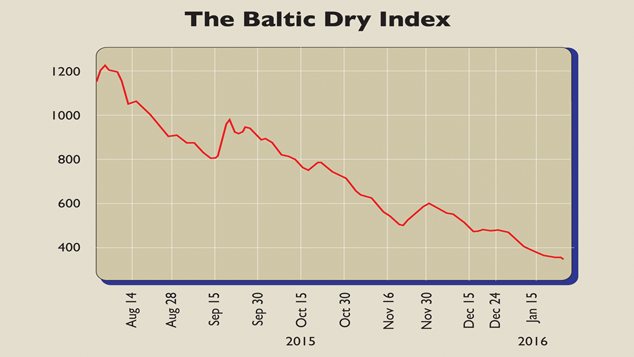Betting on a bear market
It’s been a miserable start to the year for most investors, says Alex Williams. But not for short-selling hedge fund managers.
It's been a miserable start to the year for most investors the worst on record for many stockmarkets. Indeed, the only people feeling jubilant about their portfolios right now are probably short sellers those who profit when markets fall. Short-selling is most aggressively used by hedge funds.
Put simply, a hedge fund might borrow shares in a company from the current owners (a pension fund, say) for an agreed fee. The hedge fund will sell the shares in the open market. It'll later buy them to return to the pension fund at an agreed date. The hedge fund profits if it can buy the shares back for less than it sold them for in the first place. But of course, if the price has gone up since it sold them, it makes a loss.
This clearly is a more complicated transaction than going long (buying shares that you think will rise). It's also highly risky. If you are long a share, your maximum loss is 100% of your capital, if the share price goes to zero. That sounds nasty enough. But if you are short, then theoretically your losses are limitless there is no ceiling on a share price.
MoneyWeek
Subscribe to MoneyWeek today and get your first six magazine issues absolutely FREE

Sign up to Money Morning
Don't miss the latest investment and personal finances news, market analysis, plus money-saving tips with our free twice-daily newsletter
Don't miss the latest investment and personal finances news, market analysis, plus money-saving tips with our free twice-daily newsletter
Not only that, but you have to get your timing right. By its nature, shorting is a relatively short-term trade. A value investor can buy a cheap stock and patiently wait. A short-seller can't do that they can't hang on to a losing position for years in the hope that it will eventually come good.
In some instances, however, shorting can be used to reduce a portfolio's volatility and thus its overall level of risk. Say an investor believes the market is overvalued, but uses a long-term, buy-and-hold strategy, focused on dividend-paying stocks. They may not want to sell their long-term holdings in favour of cash, but they might still want to defend against a possible downturn.
Another less aggressive use of shorting, often used by absolute return funds, is called "pairs trading", or betting on relative performance. The entire oil market is in trouble right now. So you might expect the share price of both BP and Royal Dutch Shell to fall further.
But you might think that BP has lower costs than Royal Dutch Shell, so its shares will suffer less. To take advantage, you could buy BP while shorting Shell.Done properly, you will make a profit as long as BP outperforms Shell, regardless of what happens to the oil price, or which direction their share prices move in.
If shorting appeals to you, the easiest way to do it is via spread betting. However, it's highly risky (it involves using borrowed money), potentially addictive, and is only for investors who are comfortable that they know what they're doing. If you insist on doing it, then at the very least experiment with a "dummy" account first. A less risky, though still not ideal, option, is to use an inverse exchange-traded fund (ETF).
These go up when the market falls and down when it rises, and your risk is limited to the capital invested. But you need to monitor them closely they're more expensive than "long" ETFs and, crucially, are recalculated at the end of every trading day, so that if you hold for a long period, the returns will deviate from the wider market.
Ultimately, a decision to short is a decision to time the market, and that's not something most people can do. If you genuinely want to hedge against a bear, we'd suggest raising your allocation to cash (or investing in one of the bear-market funds mentioned on page 19).
What is this leading indicator telling us?

The Baltic Dry Index (BDI), which measures the cost of chartering a cargo ship, hit a new all-time low on Monday, heightening fears that global trade is spluttering. The cost of hiring a 335-metre vessel has fallen by more than 90% since August to around $1,500 per day, writes ZeroHedge.com. It is now cheaper to hire a supertanker than a Ferrari. The industry is looking at "Armageddon", one executive told The Ship & Bunker. "We will go under if this market persists."
Is this a recessionary indicator? Falling freight rates are at least partly due to global trade being below its mid-2008 peak. They also send troubling signals about the health of China, the world's largest importer of bulk commodities, includingcoal and iron ore. But the figures are being exaggerated by factors specific to shipping.
In part, the index has followed the plunging price of crude, a key cost for shipowners. It also reflects chronic overcapacity in shipping: vessels take so long to build that when freight rates rise, as in 2008, companies over-order and the impact continues to be felt years down the line.
There are some winners, notes ANZ bank. Falling freight rates cut costs for grain farmers and miners. Commodities giant Glencore has even been paid by shipowners to use their vessels, so as to reposition them nearer busier routes. Scrapping older ships may be the only way to rebalance the market and bump up rates in the long run. Cargo ships vary in size, says the FT's Lex, but the BDI's slide has shown they "sink at the same rate".
Get the latest financial news, insights and expert analysis from our award-winning MoneyWeek team, to help you understand what really matters when it comes to your finances.
-
 The best real estate opportunities to invest in for 2026
The best real estate opportunities to invest in for 2026House price growth may be slowing but offices and online shopping are driving growth in real estate investment
-
 Asia's new tiger economy: MoneyWeek Talks
Asia's new tiger economy: MoneyWeek TalksPodcast MoneyWeek's editor, Andrew van Sickle, speaks to Dragon Capital's Thuy-Anh Nguyen about Vietnam's remarkable rise